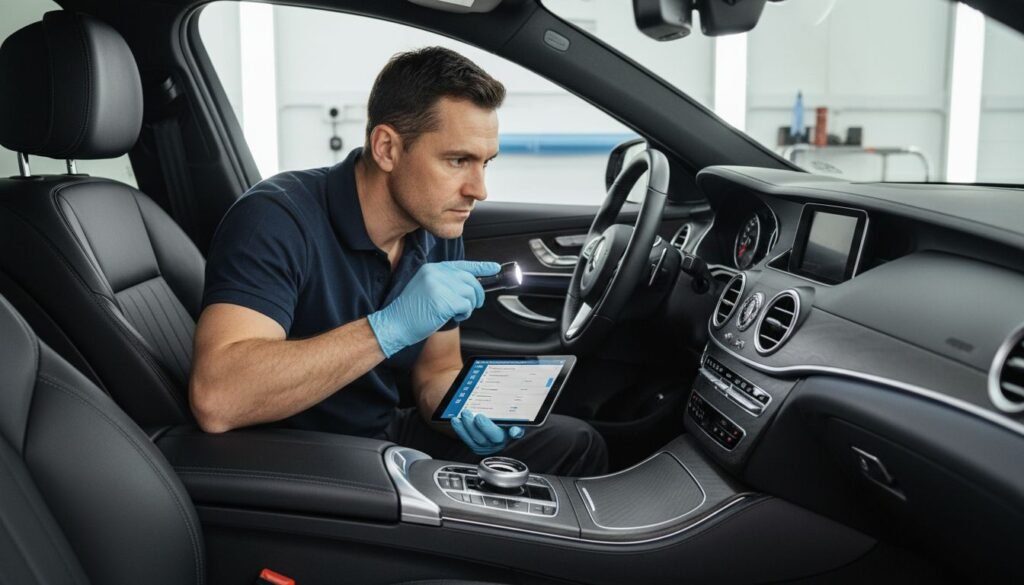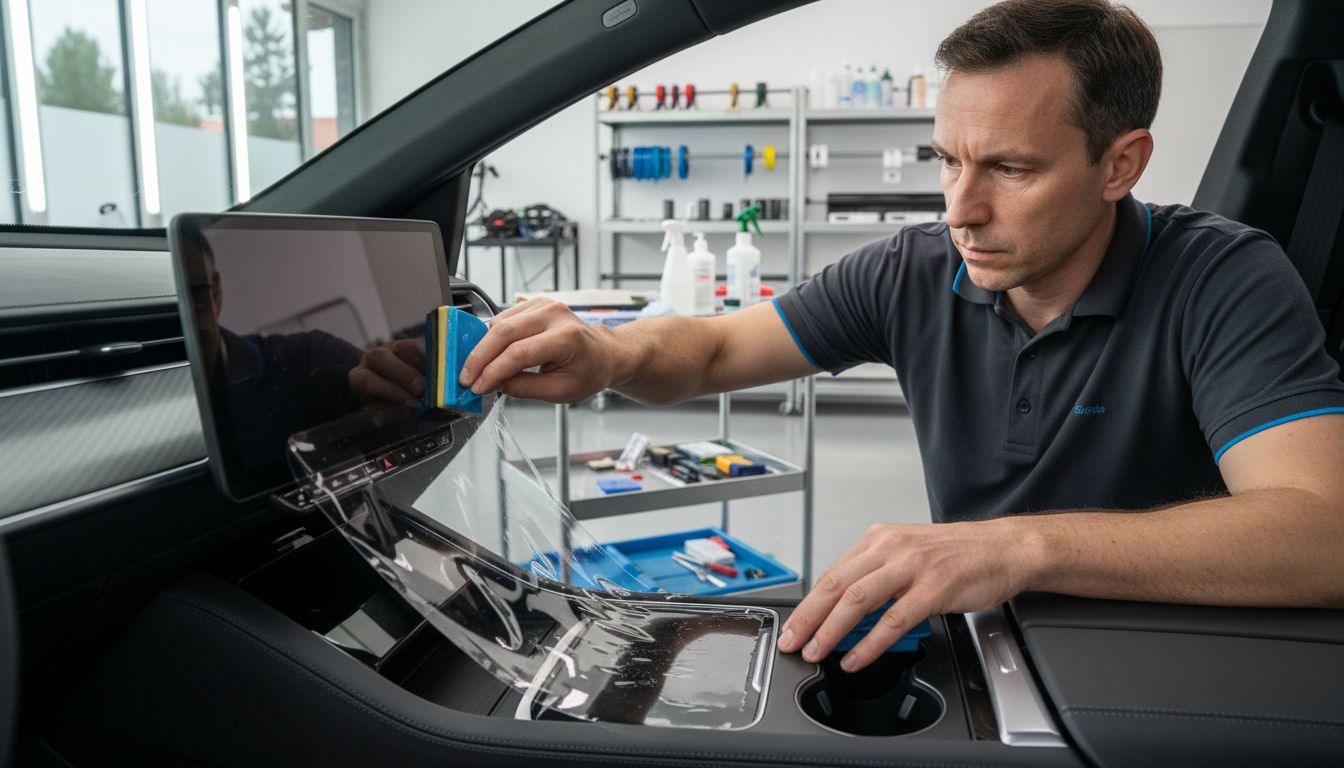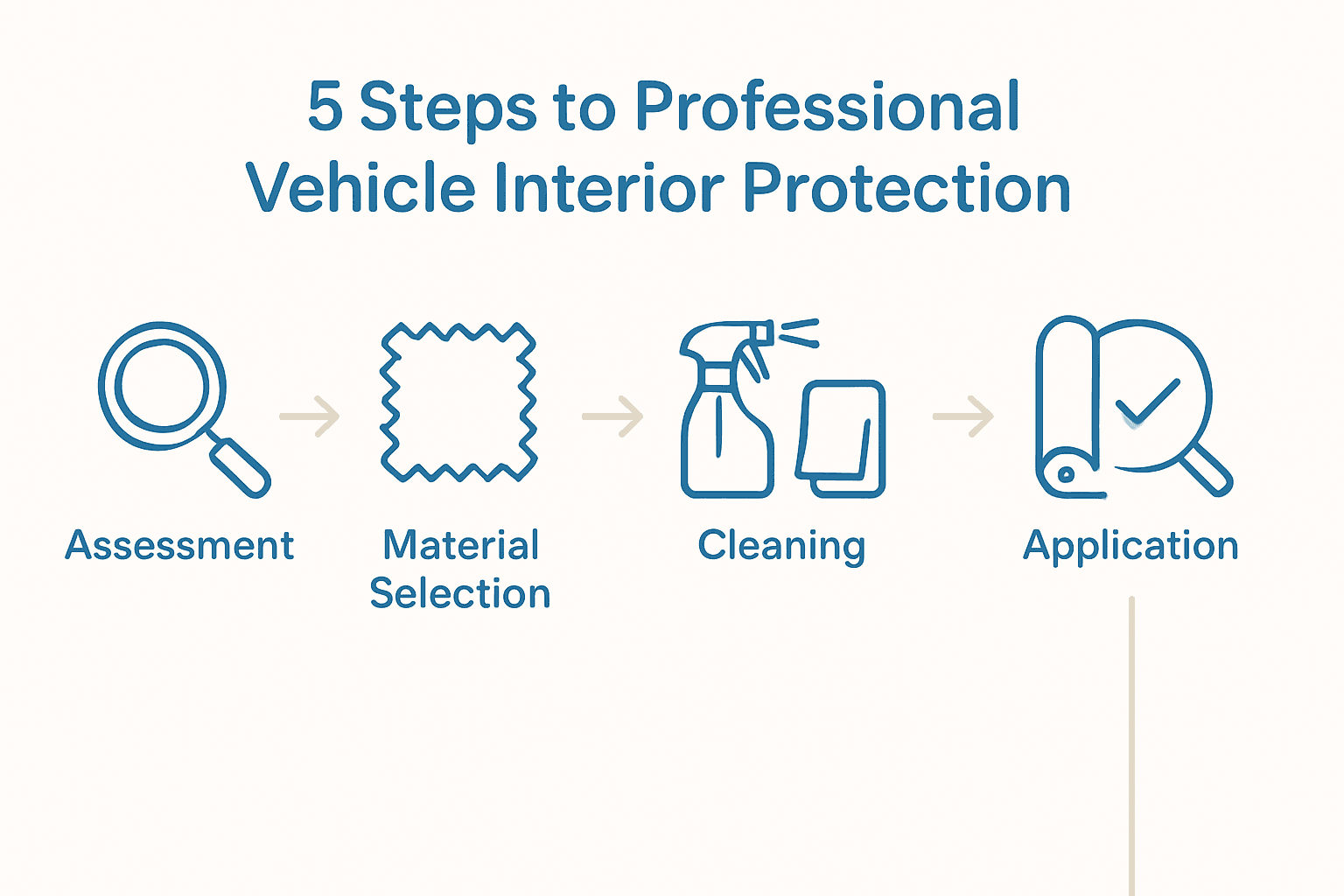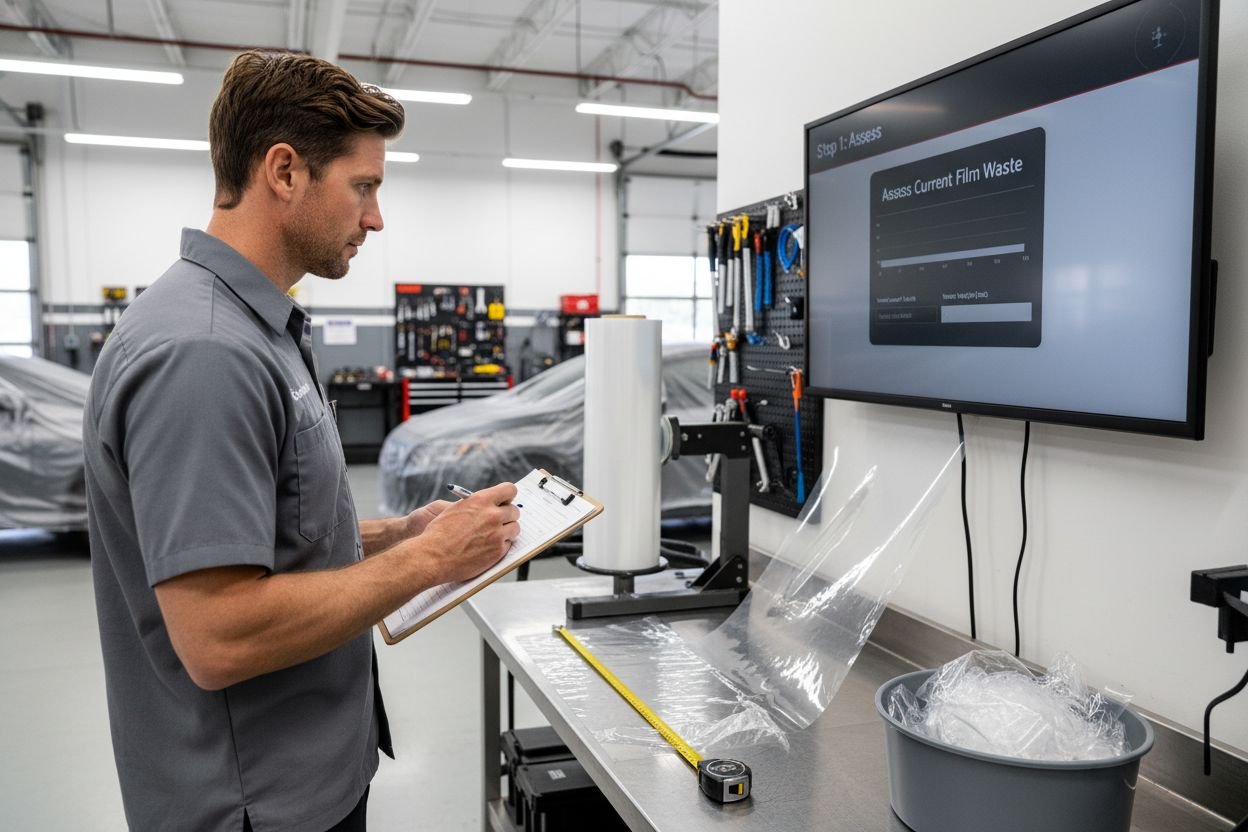
Over 80 percent of british car owners admit to worrying about premature damage or stains in their vehicle interiors. Protecting these key areas is about more than just appearances. Proper interior maintenance can boost resale value and make daily driving far more pleasant. This guide brings together expert advice and proven steps that help you preserve every surface and address the spots that need special care most.
Table of Contents
- Step 1: Assess Interior Condition And Identify Sensitive Areas
- Step 2: Select Optimal Protection Materials And Tools
- Step 3: Prepare And Clean Interior Surfaces Thoroughly
- Step 4: Apply Protective Films And Covers With Precision
- Step 5: Check Installation Quality And Address Imperfections
Quick Summary
| Key Insight | Explanation |
|---|---|
| 1. Assess Sensitive Areas Thoroughly | Conduct a detailed examination of interior surfaces, focusing on high-contact areas to identify vulnerabilities needing protection. |
| 2. Choose Appropriate Protection Materials | Select materials based on durability and resistance to wear, ensuring they are compatible with the specific interior surfaces. |
| 3. Clean Surfaces Professionally | Use targeted cleaning techniques for different materials to ensure optimal adhesion of protective films and covers. |
| 4. Apply Protective Films Precisely | Ensure accurate application of protective materials without wrinkles or air bubbles for maximum efficiency and longevity. |
| 5. Perform Final Quality Checks | Conduct a thorough inspection post-installation to identify and rectify any imperfections that may affect performance. |
Step 1: Assess Interior Condition and Identify Sensitive Areas
Professional vehicle interior protection starts with a meticulous assessment of surface conditions and potential material vulnerabilities. According to research from the ECARF Institute, identifying sensitive areas becomes crucial when preparing for comprehensive interior protection, especially focusing on surfaces with prolonged skin contact like steering wheels and seats.
To conduct a thorough interior condition assessment, begin with a systematic visual and tactile examination. Carefully inspect upholstery, dashboard, console, and seating surfaces for signs of wear, discolouration, texture changes, or existing damage. Modern vision detection frameworks like the ODAL framework from ArXiv suggest utilizing advanced detection techniques to precisely locate and evaluate potential sensitive zones within vehicle interiors.
Pay special attention to high contact areas such as steering wheel grips, seat bolsters, armrests, and control panels. These regions are most susceptible to environmental damage, UV exposure, and direct human interaction. By meticulously mapping out these sensitive areas, you can develop a targeted protection strategy that preserves interior aesthetics and functionality. The next step involves selecting appropriate protection materials tailored to the specific material composition and wear patterns you have identified.
Step 2: Select Optimal Protection Materials and Tools
Selecting the right protection materials and tools is critical for preserving your vehicle’s interior and ensuring long lasting performance. According to the Knowing Fabric guide, material selection involves understanding specific performance characteristics such as durability, resistance to wear, and maintenance requirements.
Professional detailers recommend a comprehensive toolkit for interior protection. As highlighted by HZ Car Care, essential tools include specialized vacuum cleaners with multiple attachments, microfiber cloths, detailing brushes, and protective material applicators. Consider materials like neoprene for high contact areas, which offers exceptional water resistance and durability. When choosing protection materials, prioritize those that can withstand UV exposure, resist staining, and maintain their protective qualities over extended periods.
Pro tip: Always test protection materials on a small, inconspicuous area first to ensure compatibility with your specific interior surfaces. Building a PPF Business in 2025 provides additional insights into selecting professional grade materials that balance performance and cost effectiveness. Your next step involves preparing the surface for material application, ensuring maximum adhesion and protection.
Step 3: Prepare and Clean Interior Surfaces Thoroughly
Thorough surface preparation is fundamental to achieving professional grade vehicle interior protection. According to Chemical Shark, successful cleaning requires specialized approaches for different interior materials including Alcantara, glass, rubber, and leather, each demanding unique cleaning techniques to ensure optimal protection.
Professional detailers recommend a systematic cleaning process using specific tools and products. As highlighted by DG Detailz, this involves utilizing professional grade interior cleaners, steam cleaners, and targeted leather conditioners. Begin by removing all loose debris using compressed air or powerful vacuum attachments, then progressively clean surfaces from top to bottom. Pay special attention to high contact areas like steering wheels, gear shifts, and control panels, which accumulate the most grime and require meticulous cleaning.
Pro tip: Always test cleaning products on a small inconspicuous area first to verify compatibility and prevent potential surface damage. Car Interior Cleaning Checklist for Professionals 2025 offers comprehensive guidance for creating a standardized cleaning workflow. Your next step involves applying protective materials to the freshly cleaned surfaces, ensuring maximum adhesion and long term interior preservation.
Step 4: Apply Protective Films and Covers with Precision
Applying protective films and covers requires meticulous attention to detail and professional technique. According to Accio, successful installation depends on selecting high quality materials and ensuring precise application to effectively safeguard vehicle interiors.
Professional installers recommend a systematic approach when applying protective films. As highlighted by ID Protection, this involves using custom fit seat covers and floor mats that match the vehicle’s specific dimensions. Begin by carefully aligning the protective material, ensuring smooth placement without wrinkles or air bubbles. Work methodically from one section to another, using gentle stretching techniques and specialized tools to achieve a seamless fit.

Pro tip: Always work in a clean, temperature controlled environment to prevent contamination and ensure optimal adhesion. Common Mistakes in PPF Installation and How to Avoid Them provides additional insights into preventing installation errors. Your final step involves careful inspection and minor adjustments to guarantee complete surface coverage and protection.
Step 5: Check Installation Quality and Address Imperfections
Final quality inspection is a critical phase in vehicle interior protection that separates professional results from amateur attempts. According to Werkwell, comprehensive post installation inspection ensures protective covers and trims are securely fitted and completely free from potential defects that could compromise interior aesthetics and functionality.
Professional installers employ a systematic visual and tactile inspection process. Begin by examining the entire surface under bright, consistent lighting to identify any subtle imperfections such as air bubbles, wrinkles, or misalignments. Run your hands gently across the installed protective materials, feeling for uneven edges or potential lifting points. As highlighted by Diversitech Global, precise fitting is paramount in maintaining the integrity of protective installations.
Pro tip: Use a heat gun or professional squeegee to make minor adjustments and eliminate remaining imperfections, but apply heat carefully to prevent material damage. How to Cut Window Film: Precision Tips for Pros 2025 provides additional guidance on achieving flawless installations. Your final step involves documenting the installation and providing care instructions to ensure long term protection and client satisfaction.
Achieve Professional Vehicle Interior Protection with Precision Cutting Solutions
Protecting your vehicle’s interior demands attention to detail, from identifying sensitive areas to applying flawless protective films. The article highlights challenges such as ensuring perfect material fit, avoiding wrinkles or bubbles, and maintaining long-term protection on complex surfaces. Pain points like the need for precise measurements and flawless installation techniques are critical to delivering truly professional results.
AEONCUT offers a cutting-edge answer for installers and enthusiasts seeking to overcome these hurdles. Our software delivers accurate, pre-cut patterns tailored for Paint Protection Film – AEONCUT PPF Pre-cut Cutting software. This eliminates guesswork, reduces waste, and guarantees a seamless fit for your vehicle’s interior surfaces. With AI-driven auto-nesting and cloud-based updates, you stay ahead with the latest innovations designed to enhance efficiency and quality.
Discover why countless professionals trust AEONCUT by exploring our extensive pattern libraries and flexible subscription options at aeoncutsw.com.
Ready to elevate your interior protection game with precision cuts?

Take the next step today by visiting Paint Protection Film – AEONCUT PPF Pre-cut Cutting software and transform your installation process with AEONCUT’s unmatched accuracy and control.
Frequently Asked Questions
How do I assess the condition of my vehicle’s interior for protection?
To assess your vehicle’s interior, conduct a detailed visual and tactile inspection of surfaces like upholstery, dashboards, and seats. Look for signs of wear and damage, paying special attention to high-contact areas like steering wheels and armrests.
What materials should I choose for protecting my vehicle’s interior?
Select materials that offer durability, UV resistance, and stain protection. For high-contact areas, consider using neoprene, as it excels in both water resistance and longevity.
What cleaning methods are best for preparing my vehicle’s interior?
Use a systematic cleaning approach, tailoring your methods to specific materials such as leather or Alcantara. Start by removing loose debris and follow with a thorough clean from top to bottom to ensure all surfaces are prepared for protection.
How do I apply protective films and covers correctly?
Apply protective films by aligning them precisely to avoid wrinkles or bubbles. Work methodically from one section to another, and utilise specialised tools for a smooth finish.
How can I ensure the installation of protective materials is up to standard?
Conduct a thorough final inspection under bright lighting to identify any defects like air bubbles or misalignments. Use a heat gun or squeegee to make adjustments, ensuring a secure and professional fit.
What post-installation care should I provide for long-lasting protection?
Provide care instructions detailing how to maintain the protective materials, including cleaning methods and frequency. Regular maintenance can significantly enhance the lifespan, ideally checking and cleaning the surfaces every month.

Recommended
- Car Interior Cleaning Checklist for Professionals 2025 – AEONCUT PPF Pre-cut Cutting software
- Car Interior Cleaning Checklist for Professionals 2025 – AEONCUT PPF Pre-cut Cutting software
- Understanding Why Interior Protection Films Are the Next Big Trend in Car Care – AEONCUT PPF Pre-cut Cutting software
- Understanding Interior Protection Films: Benefits for Luxury Cars – AEONCUT PPF Pre-cut Cutting software
- What Is Interior Detailing? Complete Guide for Car Owners
- Car Interior Cleaning Guide for Spotless Results in Texas



